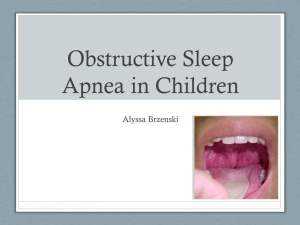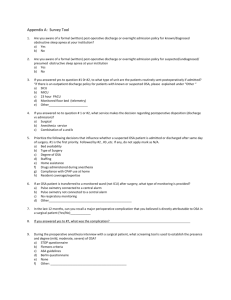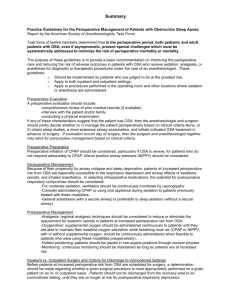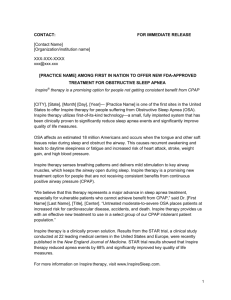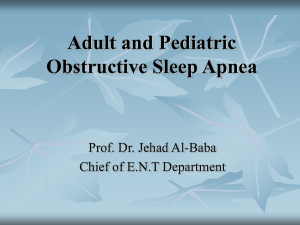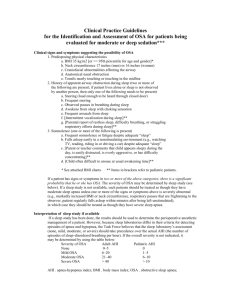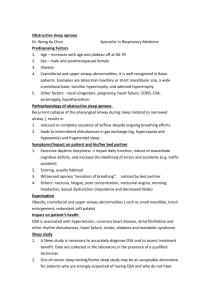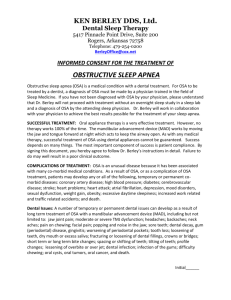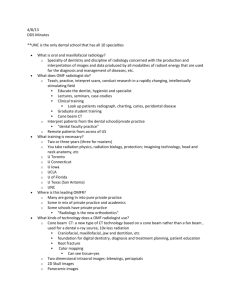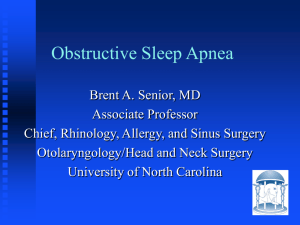Obstructive sleep apnoea syndrome
advertisement
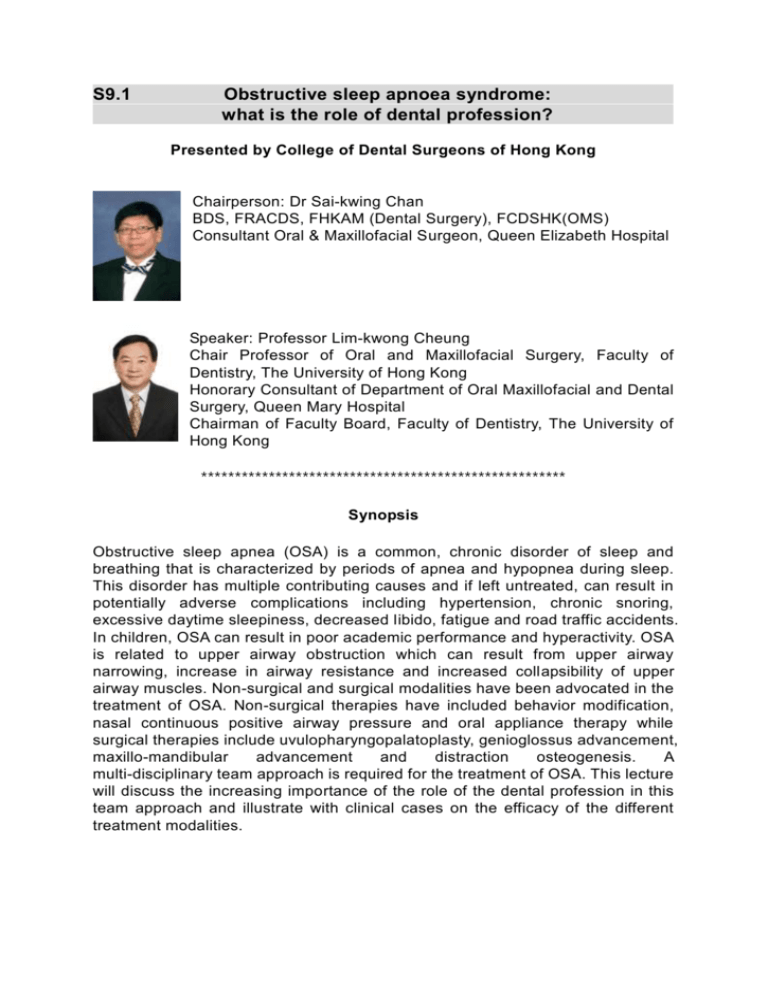
S9.1 Obstructive sleep apnoea syndrome: what is the role of dental profession? Presented by College of Dental Surgeons of Hong Kong Chairperson: Dr Sai-kwing Chan BDS, FRACDS, FHKAM (Dental Surgery), FCDSHK(OMS) Consultant Oral & Maxillofacial Surgeon, Queen Elizabeth Hospital Speaker: Professor Lim-kwong Cheung Chair Professor of Oral and Maxillofacial Surgery, Faculty of Dentistry, The University of Hong Kong Honorary Consultant of Department of Oral Maxillofacial and Dental Surgery, Queen Mary Hospital Chairman of Faculty Board, Faculty of Dentistry, The University of Hong Kong ****************************************************** Synopsis Obstructive sleep apnea (OSA) is a common, chronic disorder of sleep and breathing that is characterized by periods of apnea and hypopnea during sleep. This disorder has multiple contributing causes and if left untreated, can result in potentially adverse complications including hypertension, chronic snoring, excessive daytime sleepiness, decreased libido, fatigue and road traffic accidents. In children, OSA can result in poor academic performance and hyperactivity. OSA is related to upper airway obstruction which can result from upper airway narrowing, increase in airway resistance and increased collapsibility of upper airway muscles. Non-surgical and surgical modalities have been advocated in the treatment of OSA. Non-surgical therapies have included behavior modification, nasal continuous positive airway pressure and oral appliance therapy while surgical therapies include uvulopharyngopalatoplasty, genioglossus advancement, maxillo-mandibular advancement and distraction osteogenesis. A multi-disciplinary team approach is required for the treatment of OSA. This lecture will discuss the increasing importance of the role of the dental profession in this team approach and illustrate with clinical cases on the efficacy of the different treatment modalities.

